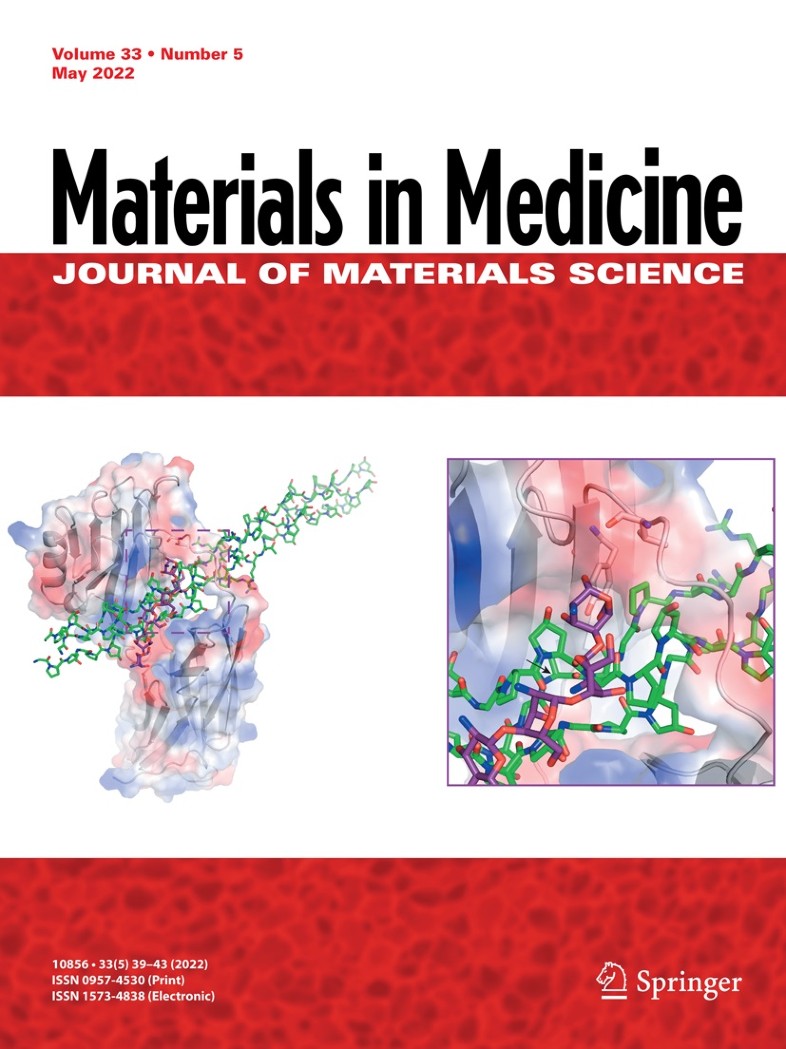Novel synthesis of Al2O3 short fibers/Ti-12Mo-6Zr composites for cranial reconstruction applications: spark plasma sintering, microstructure and nanomechanical properties
Abstract
Ceramic-Titanium matrix composites have recently attracted significant interest as a new type of biomaterials protecting the brain from external force and infections of cranial defects due to its biocompatibility and good mechanical and corrosion properties matched with the bone tissue. Spark plasma sintering (SPS) is one of powder technology techniques that can be utilised in the fabrication of final net complex and irregular shape parts used for cranial reconstruction and maxillofacial trauma by reconstruction and cranioplasty. The present work studies the effect of alumina (Al2O3) short fibers reinforcement addition on the nanomechanical properties estimated by the nanoindentation measurements of the Ti-12Mo-6Zr and its correlation with the microstructure. Al2O3 short fibers/Ti-12Mo-6Zr of different Al2O3 reinforcement short fibers content up to 5 wt.% were fabricated by Spark Plasma Sintering technique. Powders of Ti, Mo, and Zr powders were mechanically wet milled with different wt.% of Al2O3 reinforced short fibers. The mechanically mixed Al2O3 short fibers/Ti-12Mo-6Zr samples of different compositions were consolidated by SPS at 1000 oC for 5 min under vacuum and 50 Mpa compaction pressure. Optical microscopy (OM), high-resolution scanning electronic microscopy (HRSEM) conducted with Electron dispersive spectroscopy (EDAX) unite and X-Ray Diffraction (XRD) are used to evaluate the particle size and shape, surface morphology, microstructure, the chemical compositions and the phase identifications for the investigated samples. The samples were determined by the rule of mixture (ROM) as well as the Archimedes’ principle. The nanomechanical properties were estimated by measuring the nanoindentation of the produced Al2O3 short fibers/Ti-12Mo-6Zr sintered samples using a Berkovich indenter with continuous stiffness measurement (CSM) method. The hardness and the Young modulus were estimated from the obtained data of the applied load-displacement in the depth curves. The obtained Al2O3 short fibers/Ti-12Mo-6Zr composites have good mechanical properties which revealed the efficiency of the sintering process by spark plasma sintering. Also, the estimated hardness and Young’s modulus are increased by increasing the content of the Al2O3 reinforcement nanoparticles from 1 to 5 wt.% in the Ti-12Mo-6Zr metal matrix. Based on our findings of the nanoindentation studies; it was expected that the produced Al2O3 short fibers/Ti-12Mo-6Zr new composites have appropriate physical and mechanical properties for cranial reconstruction applications.

 求助内容:
求助内容: 应助结果提醒方式:
应助结果提醒方式:


